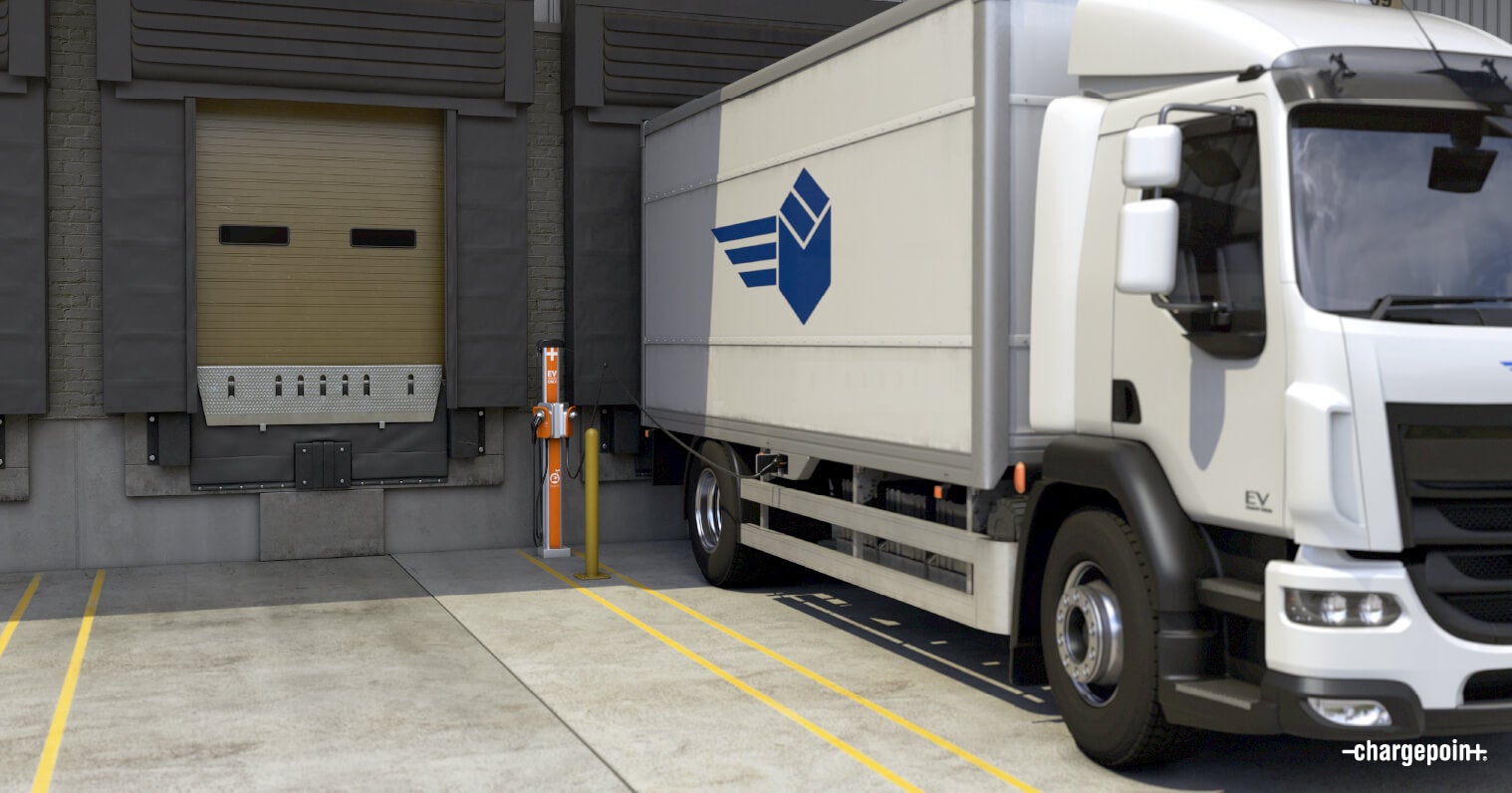
Originally published in METRO magazine.
The economic and environmental advantages of an electric fleet are clear: EVs reduce fuelling and operating costs, meet sustainability requirements, and integrate with other systems to optimise fleet operations. As fleets face budget constraints, emission standards, and consumer demand for quick delivery, it’s easy to be sold on the idea of going electric but success requires careful planning, and that becomes even more true when more vehicles are involved in the project.
Here are some tips to ensure the success of an EV pilot program.

1. Pick your dream team
It’s no surprise that executing the right plan starts with the right people. A successful EV fleet pilot requires bringing together many people, including the building’s facilities manager and property management team. It is important to work closely with the utility provider to plan the electrical updates needed to accommodate the pilot and eventual electrification. It is also important to create an expert construction project team, including contractor, buildout, and electrical roles, something a solid EV charging partner can assist with. This is one of the most important decisions to make during the journey to an all-electric fleet. Selecting the right partner upfront is crucial to scaling quickly, efficiently, and cost-effectively. Fleets experience the most success with an integrated end-to-end solution delivered by a vendor with expertise in every stage of implementing fleet charging and it is important that partner is part of the planning, installation, hardware, software, and ongoing support.
2. Pick your vehicle(s) and drivers
When considering which EVs to add to the fleet, evaluate specific use cases and routes to develop a standard operating profile for pilot vehicles. That profile includes information like miles driven per day, hours of operation, and hours available to charge. Whether the vehicle needs to go 50 or 200 miles in a day and needs to carry a heavy or large load will make a difference for route planning. Fleets with widely variable routes can develop a standard pilot operating profile to meet most needs.
Choosing the right drivers for the pilot is important as well. Select experienced drivers who know their routes intimately, can advise on vehicle needs and will fairly evaluate the EV performance against the previous petroleum-fuelled vehicle. Pilot drivers will also need to provide feedback during the pilot that can help fine-tune fleet operations.

On that note, one of the most important decisions you’ll make on your journey to an all-electric fleet is selecting an EV charging partner. Selecting the right partner upfront is crucial to scaling your electric fleet quickly, efficiently and cost-effectively. Fleets experience the most success with an integrated end-to-end solution delivered by a vendor with expertise in every stage of implementing fleet charging. You want a provider that will work with you during planning, installation, hardware, software and ongoing support.
It’s time-consuming and expensive to coordinate with multiple vendors to get one brand of charging hardware running on another brand’s network, then engage with other consultants to connect that network to your existing systems like telematics and fuel cards. You don’t want the time and expense of this work to delay your initial pilot success or the ongoing savings of your EV fleet. Take the time to pick the right partner upfront—you'll save money in the long run and achieve greater success with your EV fleet.
3. Identify how much power you need
To design how to charge the vehicles, analyse current power use for building operations and lights, then estimate how many electric fleet vehicles will be needed to serve — over time, not just for this pilot — and what their operating profiles are. Based on these vehicles’ energy needs, estimate the amount of power needed. If possible, install additional electrical capacity upfront for charging the total number of EVs eventually expected to have in service, otherwise, there can be additional expensive updates later. It is significantly cheaper to do it right the first time.
Depending on the analysis, adjustments may have to be made to the existing operations to accommodate EVs. For example, some vehicles may charge on certain days of the week, and others may charge at other times. Vehicles acquired after the pilot phase may have different battery capacity or efficiency, adjusting the charging needs again.

4. Make the right electrical upgrades
Once there is an understanding of how much power will need to charge the EV fleet vehicles, work with your utility provider to upgrade the power supply appropriately. While it may not be needed to upgrade the electrical supply for the pilot, it will certainly need more power to scale the EV fleet. If you do need to upgrade your electrical supply, consider trenching and installing conduit to support even more EV charging in the future. This will save costs later.
Tip: Find available grants or incentives to support your investment in EVs.
Because of its complexity, utility work may be the most time-consuming part of the project.
Do not forget that it involves permitting and construction work at the property as well as the utility efforts. Make sure to establish power needs early on and get started with the work as soon as there is a detailed understanding of what it will take to support the pilot. The good news is that most fleets don’t need to set up their own microgrids or battery storage to support electrification. Fleets simply need to work with their utility to ensure sufficient power supply, and the right EV charging solution will be able to intelligently allocate available power across vehicles and balance with building load to optimise electric fleet charging.
Keep in mind that some adjustments may need to be made during the charging build out. Driving lanes may change, there may be temporary entry or exit points for drivers, and parking locations may rotate at times. Think of it like remodelling a bathroom: until it's done, the morning routine must change.
5. Get connected with charging
Once the utility has supplied the site with the power needed, it is time to install the EV charging stations and set up the software to optimise energy use for the fleet. Software-driven EV charging hardware is crucial for the success of any electric fleet; it is what will allow connection to EV charging to the other systems to manage energy use and get real-time data on vehicle charging status. This will enable better measurement of the success of the pilot and continue optimising the fleet electrification over time.
6. Drive (and charge) on
Once vehicle acquisition is completed as well as utility upgrades and charging installation, it is time to start using those electric vehicles. The right routes for the pilot vehicles have been identified and the right drivers to take those routes and now it is time to turn the drivers loose and start collecting the data defined upfront. Incorporate driver feedback and immediate learnings as soon as possible, then evaluate how the pilot is progressing against the set criteria. Fine-tune the routes and charging, then expand your EV fleet.
7. Expand electric operations
Follow these planning and execution steps — and pick the right charging partner — and the EV pilot is likely to be a rousing success. As part of the electric fleet expansion, make sure to provide feedback to all partners, from utility to the EV charging provider, so they better understand how the pilot went and how they can continue to help scale the program. Incorporate driver feedback, pilot data, and any other information gathered during the pilot, and make updates to move forward with a fully electric fleet.
The world of electric fleets is a bright one. Our experts can take you through everything you should consider when transitioning to an electric fleet. Watch our on-demand webinar.
We’re excited to help you on your journey. Plan your EV fleet pilot project with ChargePoint.


